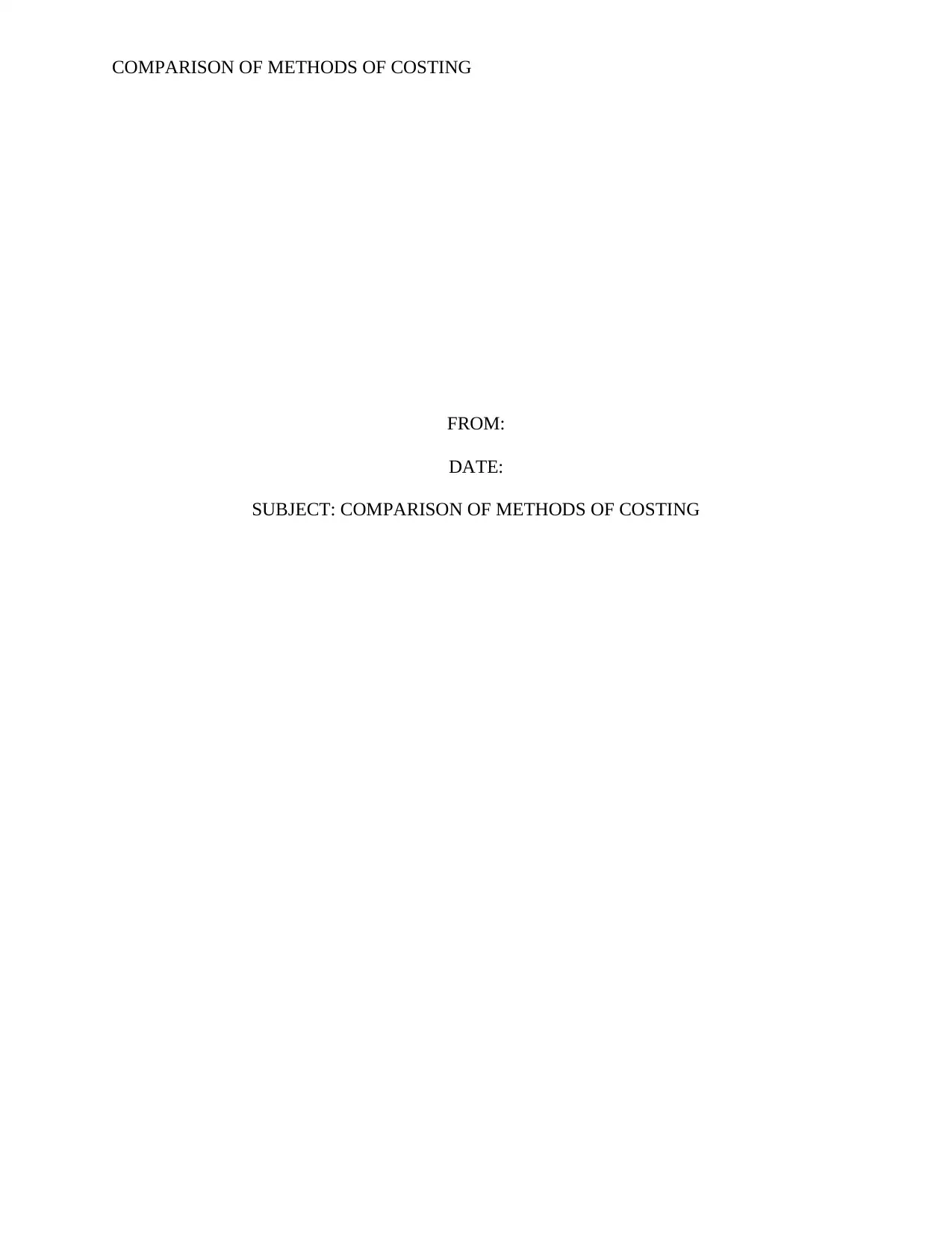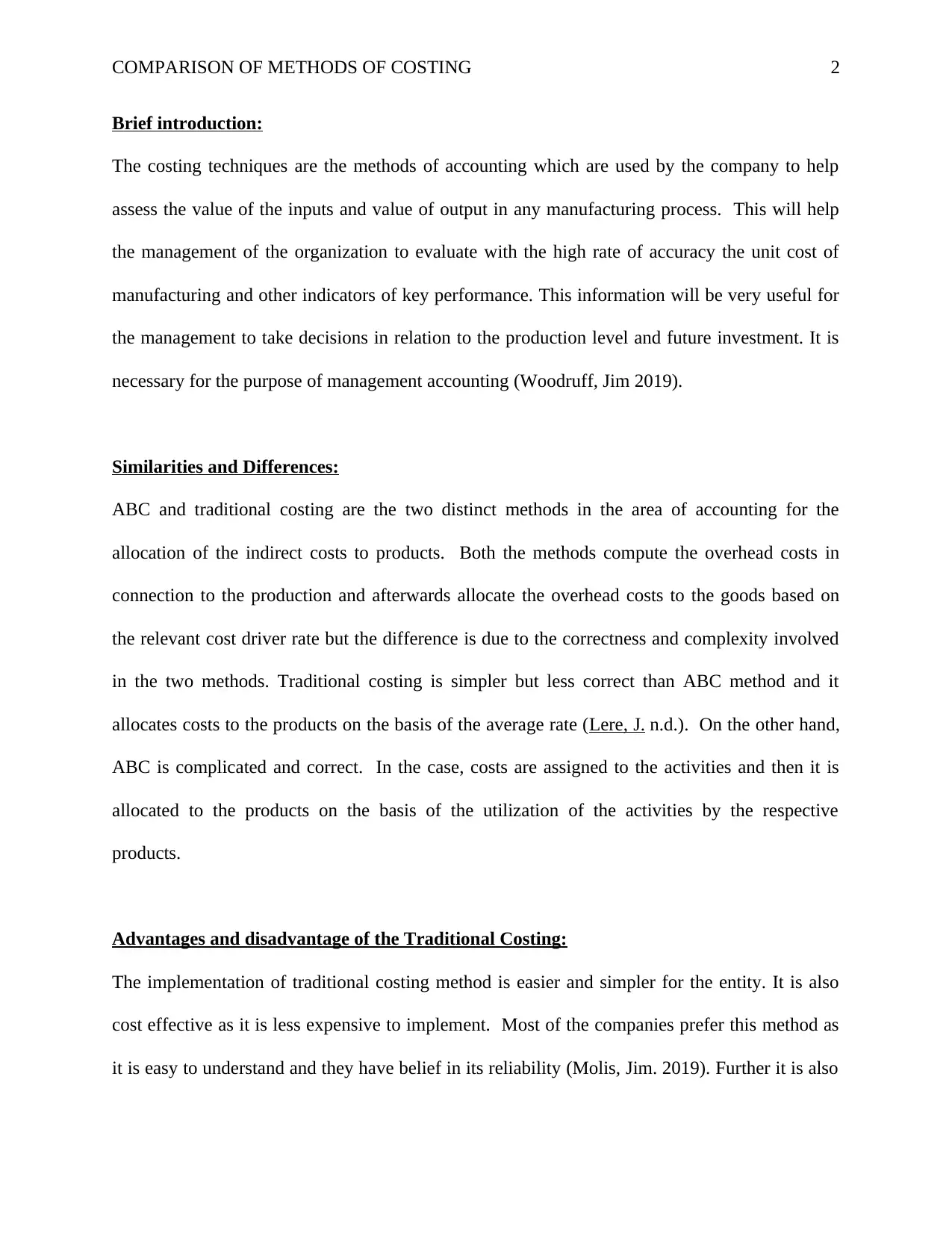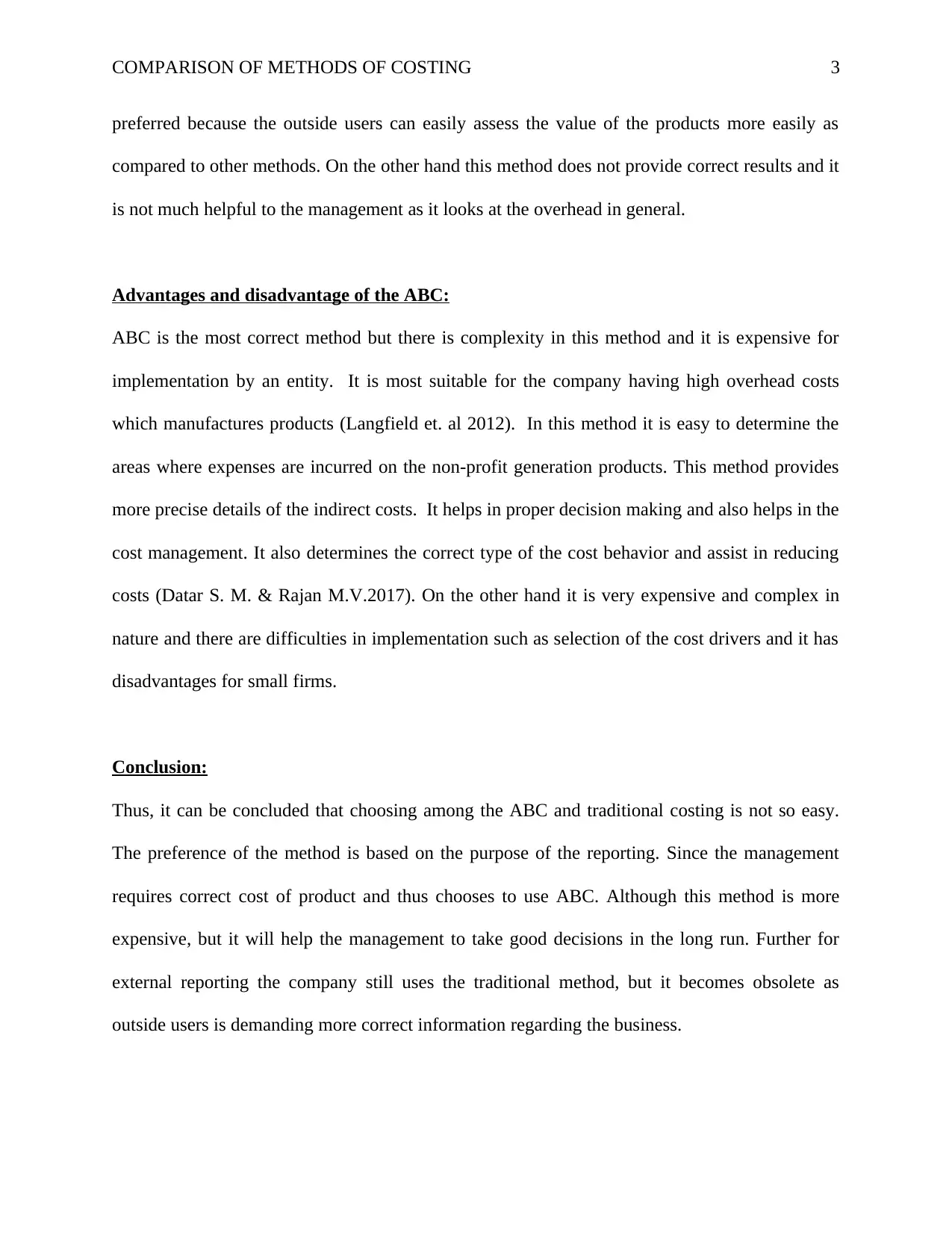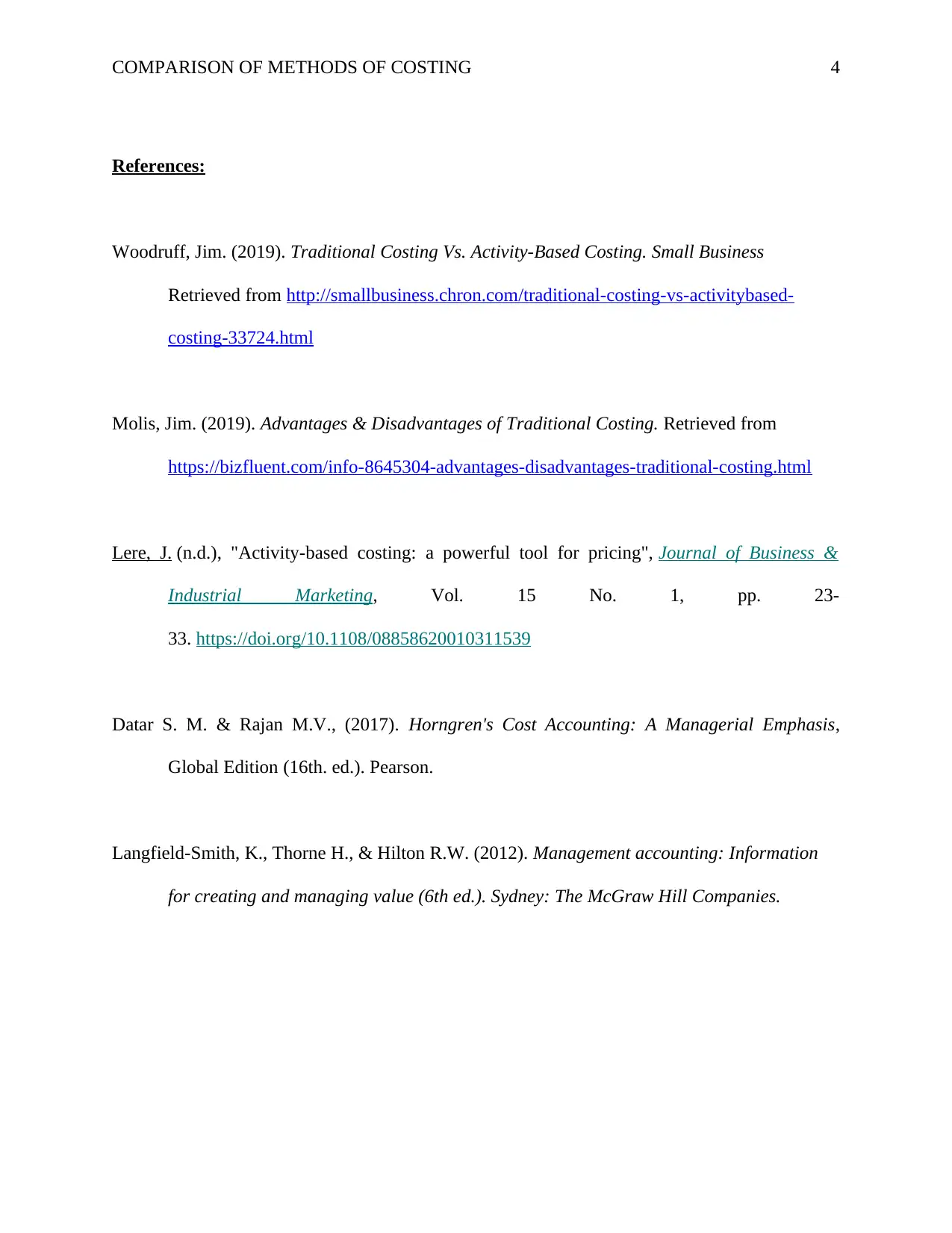Monash University ACW2391: Comparison of Costing Methods Analysis
VerifiedAdded on 2022/10/02
|4
|787
|126
Report
AI Summary
This report provides a comparative analysis of two primary costing methods: Activity-Based Costing (ABC) and traditional costing. It begins with a brief introduction to costing techniques and their significance in assessing the value of inputs and outputs within a manufacturing process, highlighting their importance for managerial decision-making. The report then delves into the similarities and differences between ABC and traditional costing, emphasizing the complexity and accuracy of ABC compared to the simplicity of traditional costing. The advantages and disadvantages of each method are thoroughly discussed, including the ease of implementation and cost-effectiveness of traditional costing versus the accuracy and precision of ABC, despite its complexity and cost. The report concludes by acknowledging the challenges in choosing between the two methods, suggesting that the choice depends on the reporting purpose, with ABC often preferred for its accuracy in managerial decision-making, even if it's more expensive. The report references various sources, including academic journals and business publications, to support its analysis.
1 out of 4









![[object Object]](/_next/static/media/star-bottom.7253800d.svg)